◣ BESTIARY & HERBIARY ◢
BESTIARY & HERBIARY ❀
BESTIARY
"Bats"

Convergently similar to Earth bats in size, appearance, and ecology, there are many species of Ethyraian "bats", many of them more active at night. The largest, the 'white bat', weighs about a kilogram and a half and has a 1.7 meter wingspan. The smallest is about twenty grams with a wingspan of 32 centimeters. Generally harmless to humans, they have strong jaws and rodentlike teeth and will bite in defense or to protect their young.
Highly social, bats twitter and squeak amongst themselves and are often seen in 'huddles' grooming acid-resistant wax into each others' fur and wings. They shelter to sleep and during the heaviest of rains (it's very cute) but are often highly active in lighter rain, closing translucent acid-resistant membranes over their large eyes. Often seen scavenging bones and carcasses, different species have a variety of diets, with some bats even preying on other species of bat.
Bats find protected places to lay soft-shelled eggs in clutches of two to five. Chicks are initially helpless little blobs but, fed by multiple members of the flock, soon grow strong enough to grasp adults, who will fly them to different roosts or away from danger. It's possible to raise a bat chick as a pet, but they're nervous, clingy animals who hate to be alone, cannot be housetrained, and don't do well in Basecamp Leviathan. Healthy pet bats usually belong to people who spend most of their time out of doors.
Chupacabras

-uncommon
-extremely vicious
-named for the mythical cryptid, these creatures have a top speed of 120 kph.
-they have tough, bony plates that deflect most weapons. its underbelly is vulnerable — to achieve the speeds it moves at, it needed to have plenty of room for flex and stretch.
-they tend to stalk their prey and will do so for many, many kilometers. if spotted, it will attack in a fury of speed.
-it goes for the kill, will generally try to snap someone's neck. thought to be a blood-drinker.
-solitary hunter. only three ever seen.
Dragonskeet
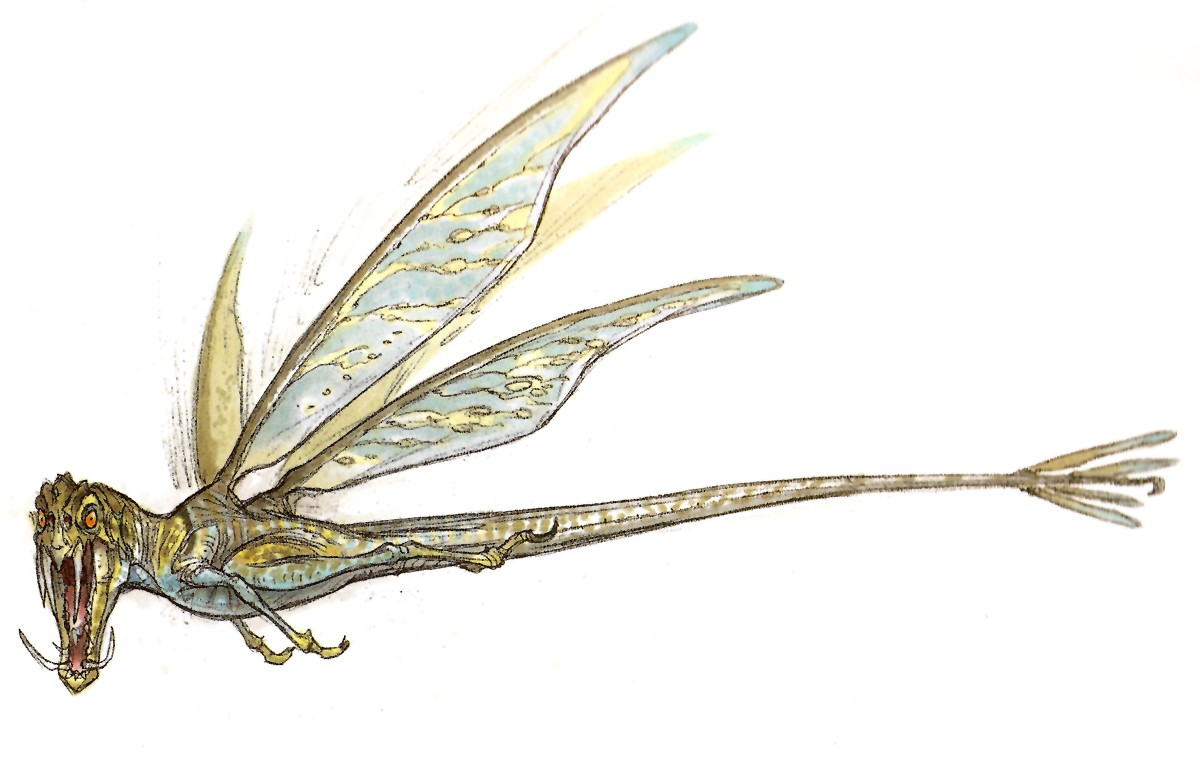
Common
Flighted individuals are anywhere from the most common 4cm to the extremely rare 60 cm. Larvae are smaller. Territorial, usually found in groups of four to seven but forming large swarms in the breeding season. Most active in the mornings and evenings and can usually be found hanging by their tails in cover during bright days and dark nights.
Dragonskeets are opportunistic, feeding on insects and other small animals, nectar, and the blood of larger animals. Larvae are parasitic and implanted in the flesh of large animals until they emerge and fly away. Rats often have larvae under their skins despite their obvious hatred of dragonskeets - the sound of a large specimen in flight agitates rats. Creatures like scorpiugs are too large to care and often bear numerous small lumps on their more tender parts.
There are many stories about humans with dragonskeet infestations but it's not that common. Unless someone is still outside for long enough, any dragonskeets attracted to them are actually trying to catch small animals frightened by their passage. They are defeated by clothing, even mosquito mesh, and if they find bare skin are much more inclined to drink someone's blood than infest them. Get any lumps checked out anyway. Dragonskeet teeth inject numbing and anticlotting agents and make for good needles, so live dragonskeets can usually be found in cages and pens within Basecamp Leviathan.
Golden Cliff Viper

- common
- a solitary viper native to arid scrub and grasslands, benign in appearance. their looks are unremarkable excepting a very faint metallic sheen under direct sunlight.
- generally reclusive; will only bite when antagonized or cornered.
- though nonlethal to most adult humans, their venom is hemotoxic enough to kill children and small animals such as dogs and cats.
- the bite is characterized by searing pain, declining blood pressure, and eventual hypovolemic shock brought on by internal bleeding.
- survivors can improve without antivenin but are likely to experience reduced kidney function.
Rats
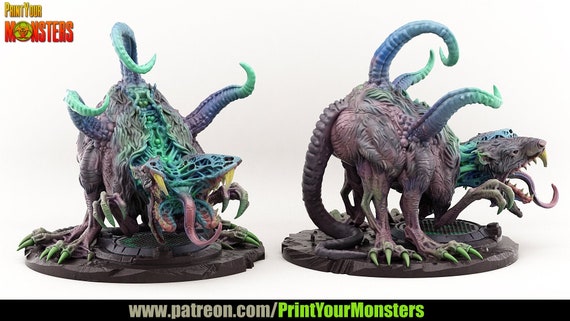
-common
-'rats' live in warrens. They are 120-200 kilograms, with tentacles and a vicious open split down the crest of their body.
-they are pack hunters, and will work together to capture living prey.
-they will not eat dead meat.
-they are highly resistant to electricity and acid. they are weak to projectile weapons and very sharp objects. cutting off the tentacles seems to make them catatonic.
Scorpiug

-common
-males are 5-10 meters tall
-females are 40-60 meters tall.
-females spit acid.
-males produce a toxin that induces sleep and paralysis on others, but the toxin also acts as a sort of lure for a female, who will then come to devour the victims. this is a form of courtship.
-treat these encounters like minibosses in a jrpg, it's got a lot of hitpoints.
Serpentfly
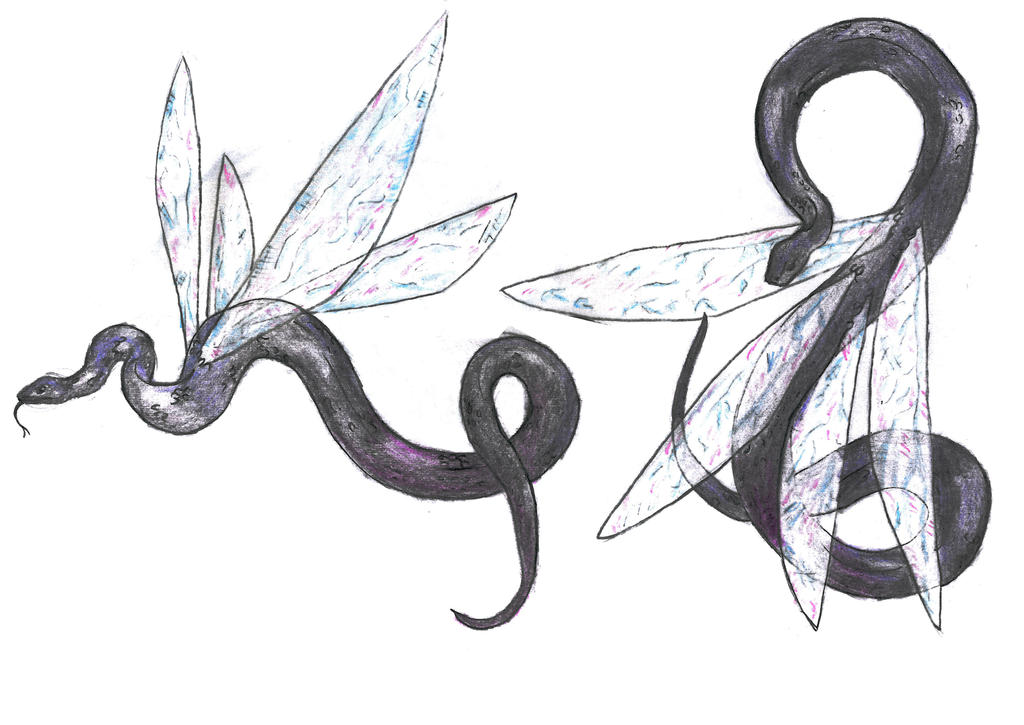
-Uncommon
-shy, passive creatures, ranging from 15 to 30 centimeters in length
-they come in a variety of bright jewel-tone colors though they aren't poisonous or venomous
-their diet mainly consists of small insects
Spinemoles
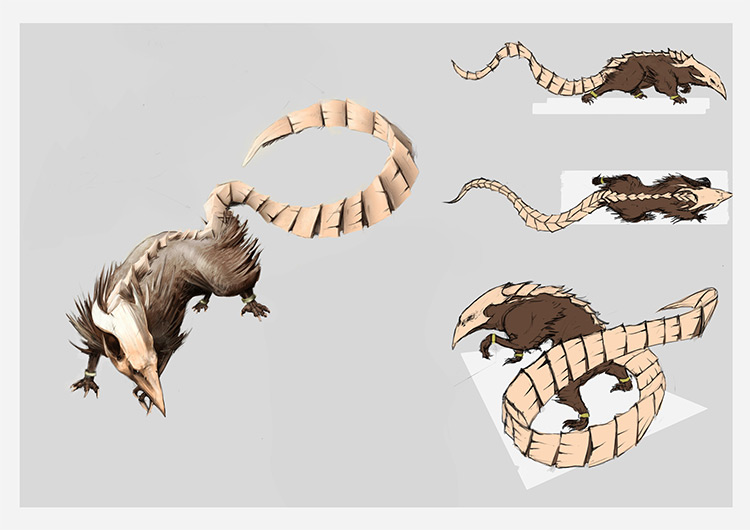
-Common
-1 to 1.5 meters in length from nose to tail
-Prefer dark, enclosed spaces for their nests
-Spit acid
TELO

Standing between 2-3 meters tall, these herd-based prey creatures are fast and elusive, but can be eaten without repercussions by carbon-based lifeforms. The meat tastes faintly of hazelnuts, but has a texture similar to bison. They have been driven far away from the basecamp, and are easily startled by sound or smells that are unfamiliar to them.
HERBIARY
Honeyglow

-uncommon
-the glowing liquid holds its light for hours even after being removed from the plant, reacts strangely well with trace amounts of phosphorous to create a natural light fixture that will work for 10-12 hours.
-can be used to create a strong glue-like substance
Hooded Lady
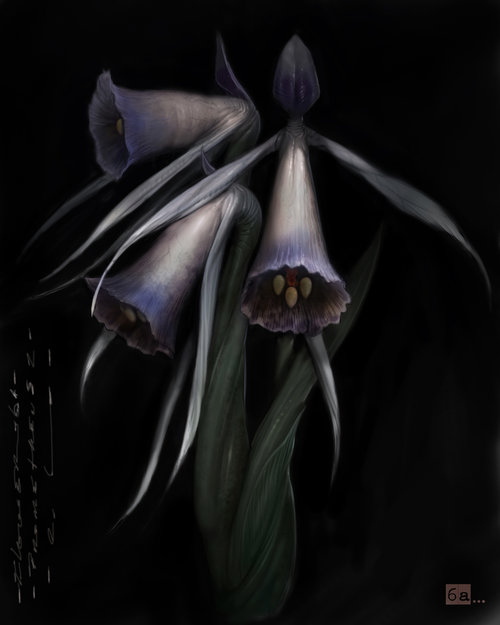
-uncommon
-grows on water banks
-when the roots sense movement nearby the flower releases hallucinogenic spores, in small amounts it is harmless, but where there are larger clusters of the plants it becomes more potent
-a hallucinogenic compound can be made from the plant, but it has to be harvested in the correct conditions. too early, it won't be potent. too late, it could be toxic. the best times are shortly after acid rainfall, preferably at dusk when the plant is less active.
Jackweed

-common
-so-named for its rather, um, suggestive shape, jackweed has a very sweet odor. The plants are very delicate, and if they are troubled (or during acid rain periods) they will retreat back into their 'mound' for safety.
-chewing jackweed stalk will keep one awake and alert for several hours. however, it causes sore throat and dry mouth. some allergic reactions have been observed in the general population.
Mireweed

-common
-a semi-sentient carnivorous plant capable of (very) slow travel. what is seen above the surface is only a tenth of it, the plant has a complex root system. it will attempt to entrap prey and can paralyze with its touch, the plant will then 'pull' living creatures into the ground through a slow process. generally they are kept alive by an almost symbiotic relationship with the plant.
-humans are generally considered too large for the plant to expend energy on capturing them, but rumor has it that the ones near the Basecamp are beginning to grow hungrier...
Ribcage Plant

-Hard, bark-like leaves can be used for construction, does not seem affected by acid rain
-grows near water
-bioluminescent red pods hold seeds, inedible
-mature 'ribcages' will break away from the larger plant and essentially become 'tumbleweeds'.
Starspires

- tends to grow at a certain elevation
- appears to secrete a natural compound that can neutralize the acid rain. one can generally tell when acid rain is coming if a starspire starts to 'sweat', it usually means the acid rain will start falling within an hour. they are kept in pots throughout the camp as a sort of advance warning system.
- however, starspires can also produce a potent painkiller if one harvests their roots. one must take care not to kill the plant, as killing one plant in a 'clutch' will kill the entire system nearby. instead, one must carefully dig up the roots and 'prune' them. the plants generally glow green, they will turn blue while handled if they do not feel endangered, and will turn pinkish if they are 'afraid'.
- they do not seem to mind being harvested so long as one handles them gently.
Teardrop mushrooms

The mycelial/root systems are common, fruiting bodies with harvestable spore pods are rare. Fruiting bodies start to form after heavy acid rains, growing two or three crops of spore pods before withering. Spore pods are bioluminsecent gel in a thin transparent 'skin'. They are firm yet squishy and smell and taste like sweet melon. Native fauna, on eating the pods, drool spore-impregnated foam and appear drunk. Predators eating drunken animals may become intoxicated themselves.
Humans cannot metabolize raw pods properly and experience intense vertigo, clumsiness, and a great deal of foaming at the mouth without any of the more fun side effects. Loss of appetite is also common and symptoms can take upwards of a week to clear.
The gel has some industrial applications. If dried, baked, and ground the spores are killed and the relevant effects are mostly neutralized, leaving a safe non-glowing bluish powder which can be added to food to sweeten it, or to soaps, toothpaste, and shampoos to make them foam well and give them a pleasant smell/taste. It's still better not to overdo it, as ingesting more than a few grams in a day can cause mild dizziness, and dreams involving heights or flying/falling are common.
Tickplant

-common, do not require much water.
-when properly boiled the fuzzy heads make a tea that has anti-inflammatory properties.
-the seed pod splits open during acid rain cycles, this is how the plant propagates.
-the roots are poisonous if consumed.
To contribute your own plants and animals to the game's setting, please fill out the form below. Label your submission by putting either BESTIARY or HERBIARY in the subject line. If you have an image in mind, please include a link to it in the specified field.
When submitting flora and fauna for consideration, remember that all creatures found on Ethyraia are native to it and evolved here organically (though convergent evolution is plausible). With this in mind, we have a few guidelines:
❀ They must be in some way distinct from Earth-native species; they may be mundane, but cannot be 1:1 analogues to anything found on Earth.
❀ While your submissions may be inspired by your or other canons, we ask that they be altered in some way from these as well. Consider, for instance, changing the name and at least ONE trait of the species you are submitting.
❀ If your submission is directly inspired by a creature that exists in fiction or in real life, please note this somewhere in the submission to help the moderators make approvals faster.
You must wait until your submission is approved before incorporating player-submitted flora and fauna into your threads.
